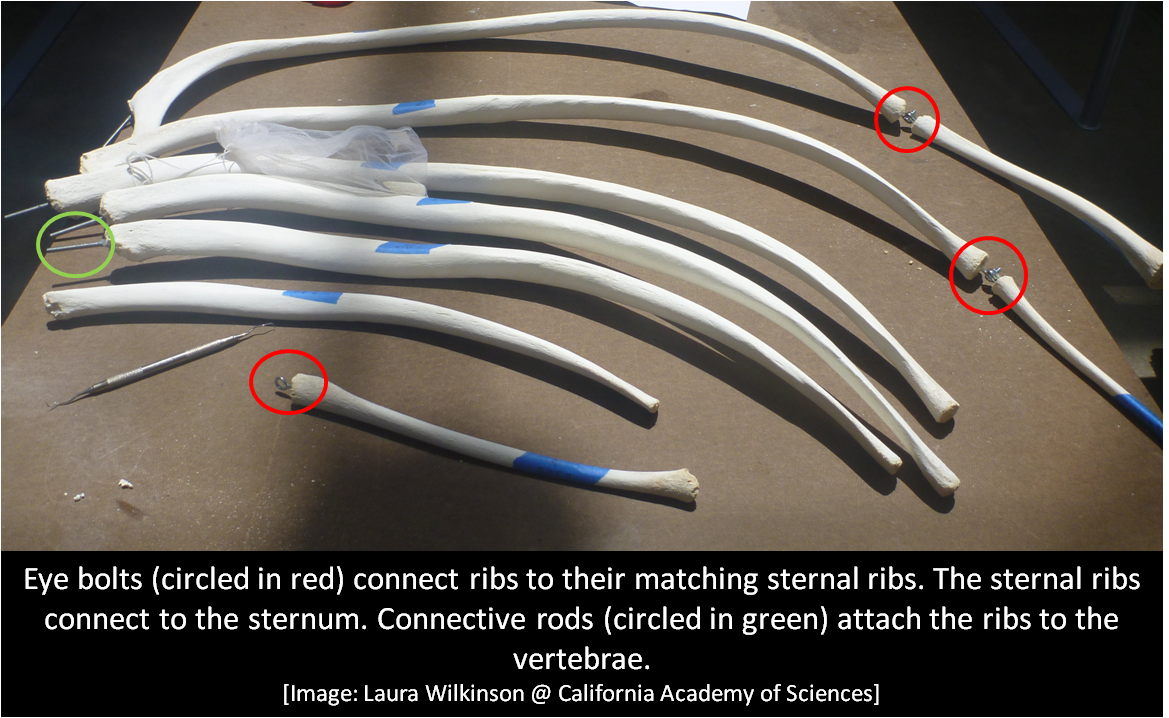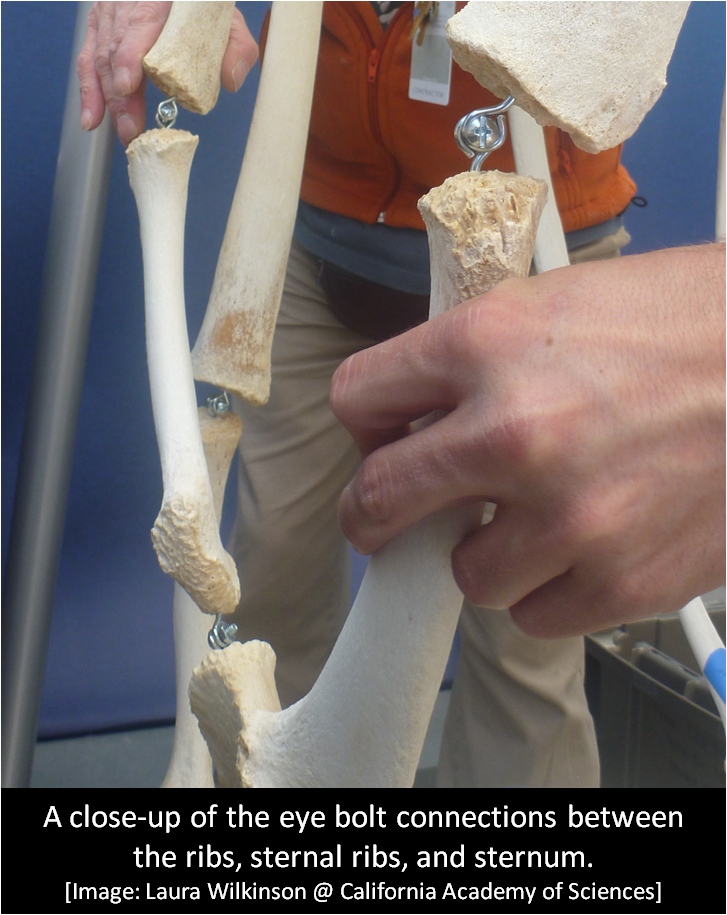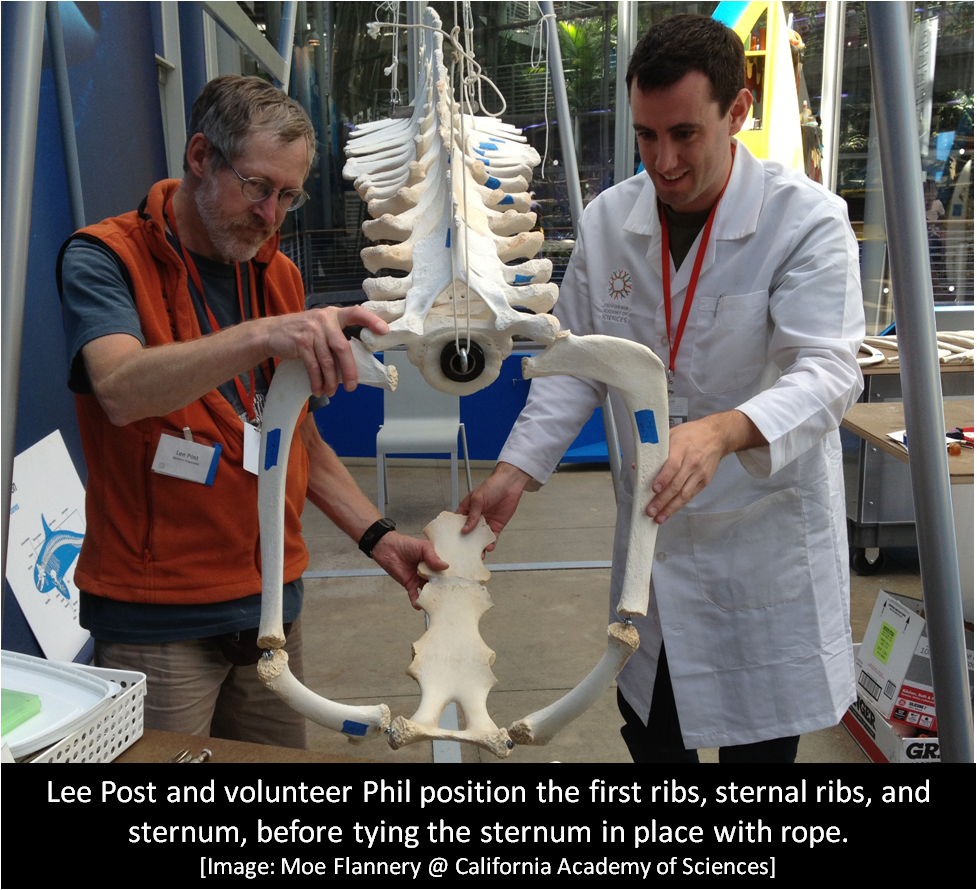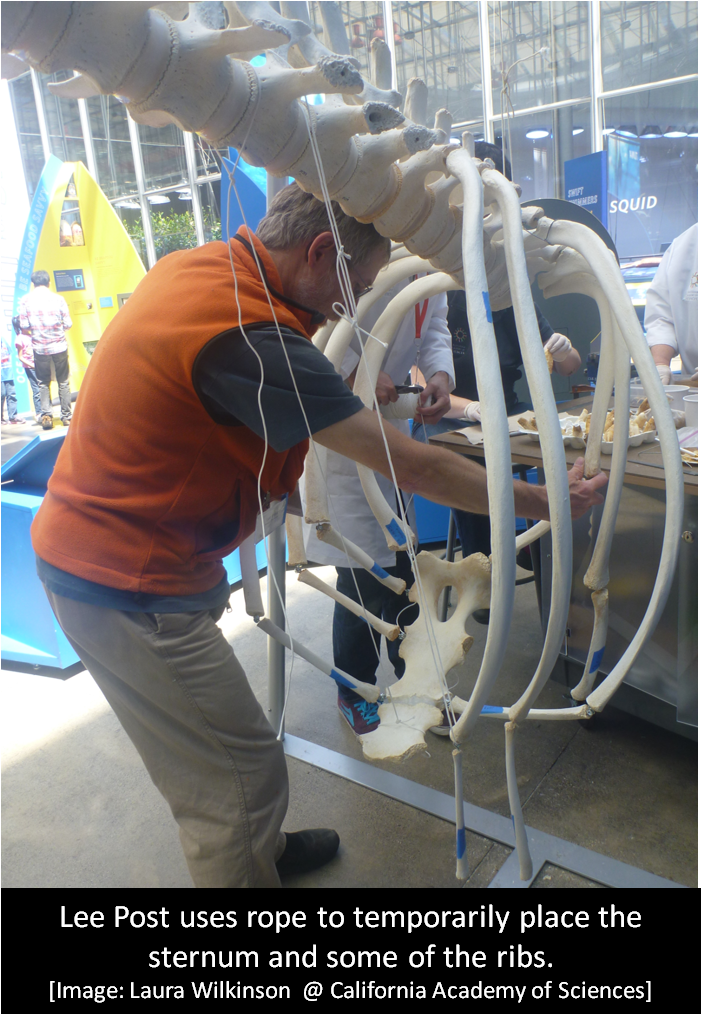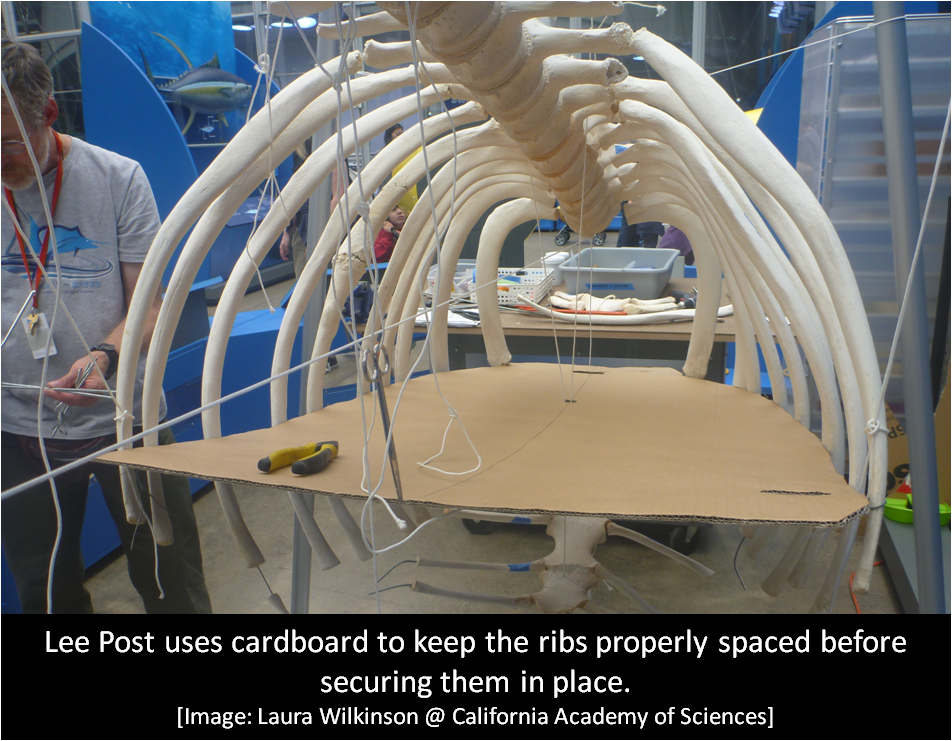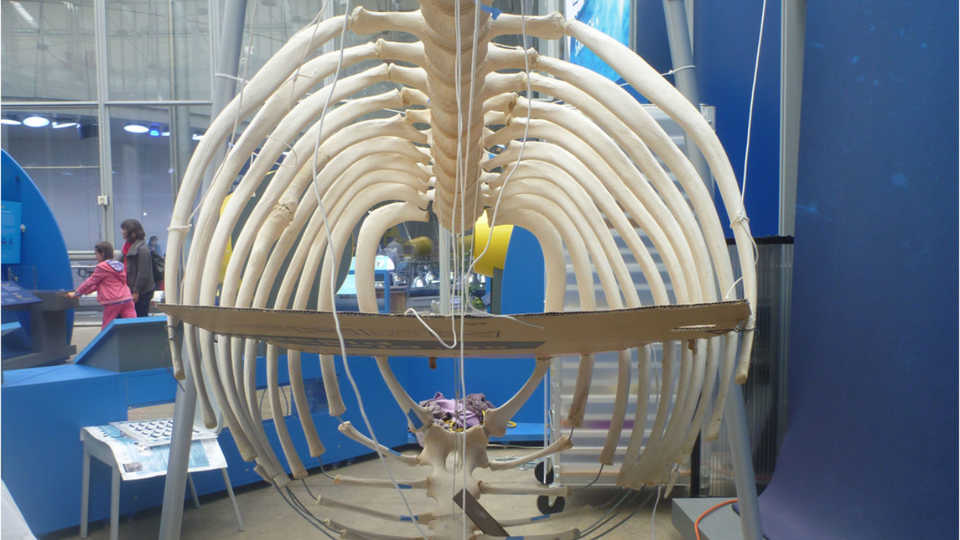
The rib cage with all ribs correctly placed. Image: Laura Wilkinson @ California Academy of Sciences
 Another time-intensive process has been matching up the ribs, getting them in the right order, and attaching them to the skeleton. Just like the vertebrae, it’s a bit overwhelming to pull all of the ribs out on a table and realize that they have to be matched and ordered, but it’s not so bad once you get the hang of it. First, we matched ribs up by “kissing” the ends together; a pair of ribs should be the same length and shape, so when you place the top ends together, the bottoms should match, as well. Once matched, we ordered the ribs from front to back of the Orca. The first set of ribs is the smallest, moving progressively larger until about ¾ of the way back, when they start to get smaller again. The last sets of ribs then are distinguished by their single heads (rather than double), showing that they only connect to the vertebrae in one spot rather than two.
Another time-intensive process has been matching up the ribs, getting them in the right order, and attaching them to the skeleton. Just like the vertebrae, it’s a bit overwhelming to pull all of the ribs out on a table and realize that they have to be matched and ordered, but it’s not so bad once you get the hang of it. First, we matched ribs up by “kissing” the ends together; a pair of ribs should be the same length and shape, so when you place the top ends together, the bottoms should match, as well. Once matched, we ordered the ribs from front to back of the Orca. The first set of ribs is the smallest, moving progressively larger until about ¾ of the way back, when they start to get smaller again. The last sets of ribs then are distinguished by their single heads (rather than double), showing that they only connect to the vertebrae in one spot rather than two.
After getting the ribs in the correct order, we had to figure out which ribs belonged on the left and right sides of the Orca based on the way that the bones curve. After everything was correctly matched and ordered, the ribs could be matched to the smaller sternal ribs that connect the main rib to the sternum. Holes were drilled in the ends of each bone to insert connective pins, which were then glued into place. These will anchor the ribs to the vertebrae. Eye bolts connect the ribs and sternal ribs together to allow for flexibility.
Properly aligning all of the ribs on the sternum and vertebrae has been quite a process. Each rib has to be placed precisely or else the rib cage won’t come together into one smooth section. We’ve been using rope to hold the sternum in place while we move the ribs to their correct positions. A piece of cardboard helps to keep the ribs spaced and placed correctly before finally gluing the connective pins into place.
Lastly, we'll use epoxy clay and silicone to cover the connective rods. We’re wrapping up on the articulation and will be finishing on Sunday, June 9th. Come by this week to see us put the finishing touches on our Orca!
-Laura Wilkinson, Curatorial Assistant and Specimen Preparator, Ornithology and Mammalogy
All marine mammal stranding activities were conducted under authorization by the National Marine Fisheries Service through a Stranding Agreement issued to the California Academy of Sciences and MMPA/ESA Permit No. 932-1905/MA-009526.


